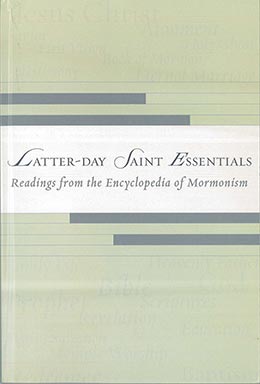Stake President, Stake Presidency
Kim S. Cameron
Kim S. Cameron, “Stake President, Stake Presidency,” in Latter-day Saint Essentials: Readings from the Encyclopedia of Mormonism, ed. John W. Welch and Devan Jensen (Provo, UT: BYU Studies and the Religious Studies Center, Brigham Young University, 2002), 128–30.
The Church officer who presides over several wards (congregations) that comprise a stake is the stake president. A stake president is selected by the General Authority assigned by the Quorum of Twelve Apostles to preside at that stake’s conference. He typically interviews many Melchizedek Priesthood leaders in the stake and then seeks inspiration from God to determine whom to call. The General Authority calls the stake president and instructs him to nominate two counselors who are interviewed and called. These three men constitute the stake presidency. They serve voluntarily, receiving no financial remuneration from the Church. Counselors to the stake president advise and assist him in his responsibilities and counsel with him in decision making. As with all officers in the Church, members of the stake presidency must be sustained by the vote of the members over whom they preside (D&C 20:65). Each stake president supervises and is responsible for the progress of the Church in his stake, including all Church activities, callings, ordinances performed, and programs.
Members of the stake presidency hold the office of high priest, and they serve as the presidency of the high priest quorum and supervise all Melchizedek Priesthood quorums. This means they hold the proper priesthood authority to act as the Lord’s agent in behalf of the members.
What the stake president performs and authorizes within the scope of his calling is recognized as official and binding by the Church. For example, the stake president authorizes ordinations of worthy men to offices in the Melchizedek Priesthood, such as elder and high priest. He submits to the First Presidency for their approval the names of men to be called as bishops. When the approval is granted, the stake president issues the call and ordains the man a bishop, after he has been sustained by his ward. The stake president calls the presidents of the women’s organizations of the stake. He sets them apart after they have been sustained by vote of the stake. Both stake and full-time missionaries are set apart and later released by stake presidents. With a few exceptions, stake presidents may delegate to their counselors, or to high councilors, the authority to perform ordinances, issue calls to serve, ordain others to priesthood offices, and give spiritual blessings. Stake presidencies are to draw upon the scriptures and are to seek inspiration through prayer. The stake president is the one ultimately responsible for decisions made, but the stake presidency is to act as a unified quorum when decisions are made and actions taken. The stake presidency is accountable to members of the General Authorities of the Church for the administration of their stake.
During semiannual stake conferences, members of the stake gather to hear instruction and inspirational messages from the stake presidency and other leaders. Stake presidents provide additional spiritual direction through counseling individuals and families and by visiting members’ homes.
The stake president also presides over certain council meetings in which the spiritual Welfare of Church members is the focus, such as meetings to address the needs of the poor or to prepare for emergencies, or councils that conduct disciplinary procedures for Church members who have transgressed fundamental standards of the gospel. Through personal interviews, stake presidencies certify the worthiness of members to enter temples and to be ordained to Melchizedek Priesthood offices, after they have been recommended to the stake president by their bishop. Bishops are to report their stewardship and the Welfare of their congregations to their stake president.
Stake presidents are charged with fiscal responsibility for the stake. Clerks are called to help with record keeping and payments, but the expenditures of all wards, priesthood quorums, and auxiliary organizations within the stake are the responsibility of the stake president. Financial assistance provided to needy individuals is administered by ward bishops, supervised by the stake president. In addition, since most wards meet in Church-owned buildings, the maintenance and operation of all physical facilities in the stake fall under the auspices of the stake president.
The stake president serves until he is released. As is the case with all callings in the Church, he neither campaigns for the position nor chooses the time of his release.
Bibliography
McConkie, Bruce R. Mormon Doctrine, p. 763.
Richards, LeGrand. A Marvelous Work and a Wonder, chap. 12. Salt Lake City, 1968.
